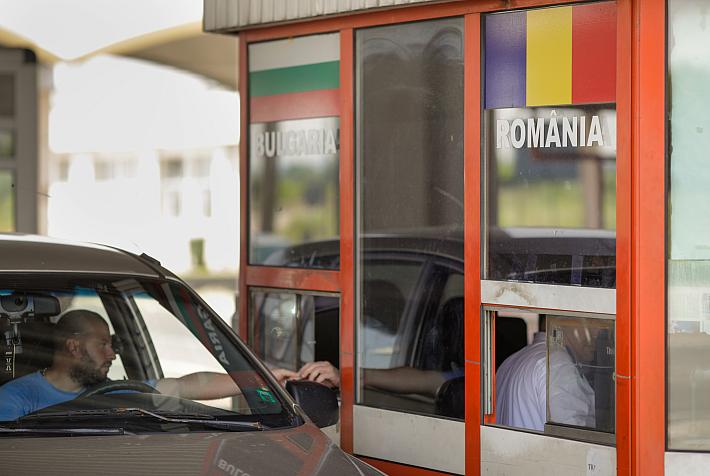Native content supported by the Cambridge School of Bucharest
Culture, Community, and Curriculum: When is the best time to move between different educational systems?

What is your child’s school like? Does its curriculum emphasise exploration, independent thinking, and creativity? Is your child studying in an educational system that will help him/her in the future?
These are key questions to consider when deciding which educational system is right for your child, and when the best time to move between systems is.
Before entering a child into a particular system, it is important to understand the values, assessments of performance, curriculum approach, and unique identity of each potential school. This can result in an overwhelming number of considerations when selecting the right system and the best school for your child. To help you answer these questions, it is best to contact the admissions department of any schools you are interested in as they will be able to support you in your decision-making process and have a visit when possible to feel the atmosphere in person.
“Working with parents on deciding the correct system for their child is the best part of my job. It is great to answer their questions, explain the British curriculum, and the nuances between the variety of educational systems. My school offers education for children ages 3 to 18, so we cover all the requirements of the Romanian system and students receive prestigious qualifications that are accepted anywhere in the world,” says Rebecca Elian, international school Admissions Officer.
The education system of Britain is one of the most storied and widely replicated learning systems across the globe, with 45% of all international schools teaching in the English language also offering a British-based curriculum. However, there is a big difference between a school that offers the British curriculum and one that is a British School Overseas (BSO). A BSO school is an officially recognised British school and is certified by the UK Government’s Department for Education (DfE). Such institutions are listed in the get-information-schools.service.gov.uk database.
“When a school has official BSO status, parents can rest assured that a school offers the highest quality curriculum, as well as excellent levels of support and opportunities for the development of each child. The BSO quality seal also means that excellent standards of health and safety, e-safety, child safeguarding, and personal development of students are in place. This makes any school with BSO a safe, reliable, and capable institution with high academic standards,” advocates Jo Wells, international British educational consultant.
Once a decision has been made on the system your child will enter, it is essential to consider the best time to begin studying a new curriculum. If deciding to enter the British system at the compulsory age for education in Romania (clasa 0/clasa pregătitoare), you would be entering Key Stage 1, the foundation years in the British system. Throughout Key Stage 1, your child would develop their skills in numeracy, phonics, reading and writing, all while developing their creativity and socialisation skills in personal development time, art, music, and outdoor play.
Developing students’ skills in both written and spoken English at an early age, using phonemes and graphemes, gives them the ability to develop their talents in language acquisition. This provides an excellent foundation for more complex skills such as making inferences and developing questioning techniques.
The next key transition point between the Romanian and British systems is in Grade 4/Year 5. At this point students would study a wide variety of subjects including, English, Maths, Science, Design and Technology, History, Geography, Art, Computing, and Modern Foreign Languages. Years 5 and 6 are the summative years of the British Primary curriculum and prepare students for end of Key Stage 2 examinations, Cambridge Checkpoint exams, and beginning of Key Stage 3 (Years 7 to 9).
“The transition between systems was very easy for my child in Year 5. This meant he could settle into life at a new school before having to focus on the end of Year 6 Cambridge exams. By the time he was ready to move onto the higher stages of the school’ he had made friends, had gotten to know his teachers, and understood British system,” Ms. Popescu, parent of a Year 5 child at Cambridge School of Bucharest.
Key Stage 3, Years 7 to 9, is where students aged 11 to 14 undertake a broad and challenging curriculum. Joining a British school during Key Stage 3 would allow your child to be taught by specialist teachers, in all subjects, and become a well-rounded and confident learner. It has often been said that this is the best time to move to a new system to maximise a student's access to the curriculum to prepare for the exams that take place in later years.
As students approach the end of Key Stage 3, Grade 8/Year 9, they will be asked to select the subjects they wish to continue studying for IGCSE in Years 10 and 11. Year 9 prepares students for this by introducing the IGCSE curriculum and holding informational events for both students and parents to support the decision-making process.
“Coming to a British school in Year 9 gave me enough time to adapt to the curriculum and decide what subjects I would like to pursue for IGCSE. Joining in Year 9 made sure I had the skills, and it guaranteed my ability to be successful in the subjects I chose,” Igor D., Year 11 student at Cambridge School of Bucharest.
Throughout Years 10 and 11, students develop their interests in knowledge-rich, stimulating, and thought-provoking programmes of study. Transition to an IGCSE programme is possible at the beginning of Year 10; however, it does become more challenging as the year progresses due to the rapid pace of study for each subject. Schools may accept students during Year 10, but this is reviewed student-by-student to make sure any child joining a subject is able to integrate successfully. Joining an IGCSE course in Year 11 is very rarely possible, as a student would be in the latter part of a 2-year programme of study. It is recommended that a child join the IGCSE programme during the initial stages, the beginning of Year 10, or better yet in Year 9, to ensure success and the best possible outcome.
The final point to transition from another school to the British system would be in Year 12, the beginning of Key Stage 5, to complete an A Level qualification that is an internationally recognised equivalent to the Romanian Baccalaureate. Joining the system at this late stage does have some disadvantages, the main one being the lack of exposure to the earlier curriculum content upon which these courses are built. Therefore, it is recommended that students join the British system at an earlier Key Stage, as this will lead to greater depth, and breadth of knowledge.
When deciding to move between educational systems there is no wrong time, but there are times that allow for a smoother transition. The best approach is an informed approach, and it is always advisable to speak to any schools you are interested in to best understand their culture, community, and curriculum.
This is native content supported by the Cambridge School of Bucharest.












